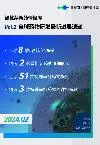New method developed to isolate HIV particles
2024-03-28
Researchers have developed a new method to isolate HIV from samples more easily, potentially making it easier to detect infection with the virus. They focus on peptide nanofibrils (PNFs) on magnetic microparticles, a promising tool and hybrid material for targeted binding and separation of viral particles.
Researchers at Leipzig University and Ulm University have developed a new method to isolate HIV from samples more easily, potentially making it easier to detect infection with the virus. They focus on peptide nanofibrils (PNFs) on magnetic microparticles, a promising tool and hybrid material for targeted binding and separation of viral particles. They have published their new findings in the journal Advanced Functional Materials.
"The presented method makes it possible to efficiently capture, isolate and concentrate virus particles, which may improve the sensitivity of existing diagnostic tools and analytical tests," says Professor Bernd Abel of the Institute of Technical Chemistry at Leipzig University. The nanofibrils used -- small, needle-like structures -- are based on the EF-C peptide, which was first described in 2013 by Professor Jan Münch from Ulm University and Ulm University Medical Center. EF-C is a peptide consisting of twelve amino acids that forms nanoscale fibrils almost instantaneously when dissolved in polar solvents. These can also be applied to magnetic particles. "Using the EF-C peptide as an example, our work shows how peptide fibrils on magnetic particles can have a completely new functionality -- the more or less selective binding of viruses. Originally, fibrils of this kind were more likely to be associated with neurodegenerative diseases," adds Dr Torsten John, co-first author of the study and former doctoral researcher under Professor Abel at Leipzig University. He is now a junior researcher at the Max Planck Institute for Polymer Research in Mainz, Germany.
"Increasing the local concentration and isolating viruses from samples are critical to increasing the sensitivity of diagnosing viral infections," says Professor Münch. The researchers from Ulm and Leipzig have presented such a method for the concentration and isolation of HIV particles. In their study, they show how PNFs can be used effectively to separate HIV particles from solutions without relying on centrifugation. This innovative method uses special magnetic microbeads to specifically bind and magnetically separate virus particles, preserving their activity and infectivity. This is significant for new genetic engineering processes, for example. The study highlights the importance of the new method for HIV research and diagnostics, as well as for other applications in viral research. By improving the efficiency with which virus particles can be concentrated and isolated, this technology and the new hybrid material could help to improve the diagnosis of infections and the monitoring of resistance.
更多内容,请访问原始网站
文中所述内容并不反映新药情报库及其所属公司任何意见及观点,如有版权侵扰或错误之处,请及时联系我们,我们会在24小时内配合处理。
靶点
-立即开始免费试用!
智慧芽新药情报库是智慧芽专为生命科学人士构建的基于AI的创新药情报平台,助您全方位提升您的研发与决策效率。
立即开始数据试用!
智慧芽新药库数据也通过智慧芽数据服务平台,以API或者数据包形式对外开放,助您更加充分利用智慧芽新药情报信息。





